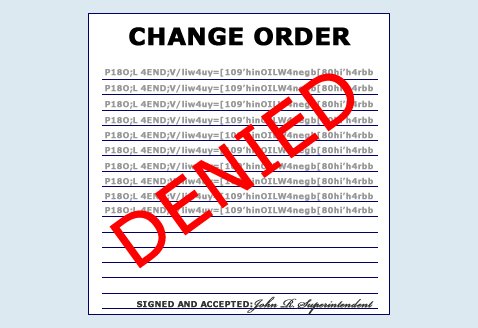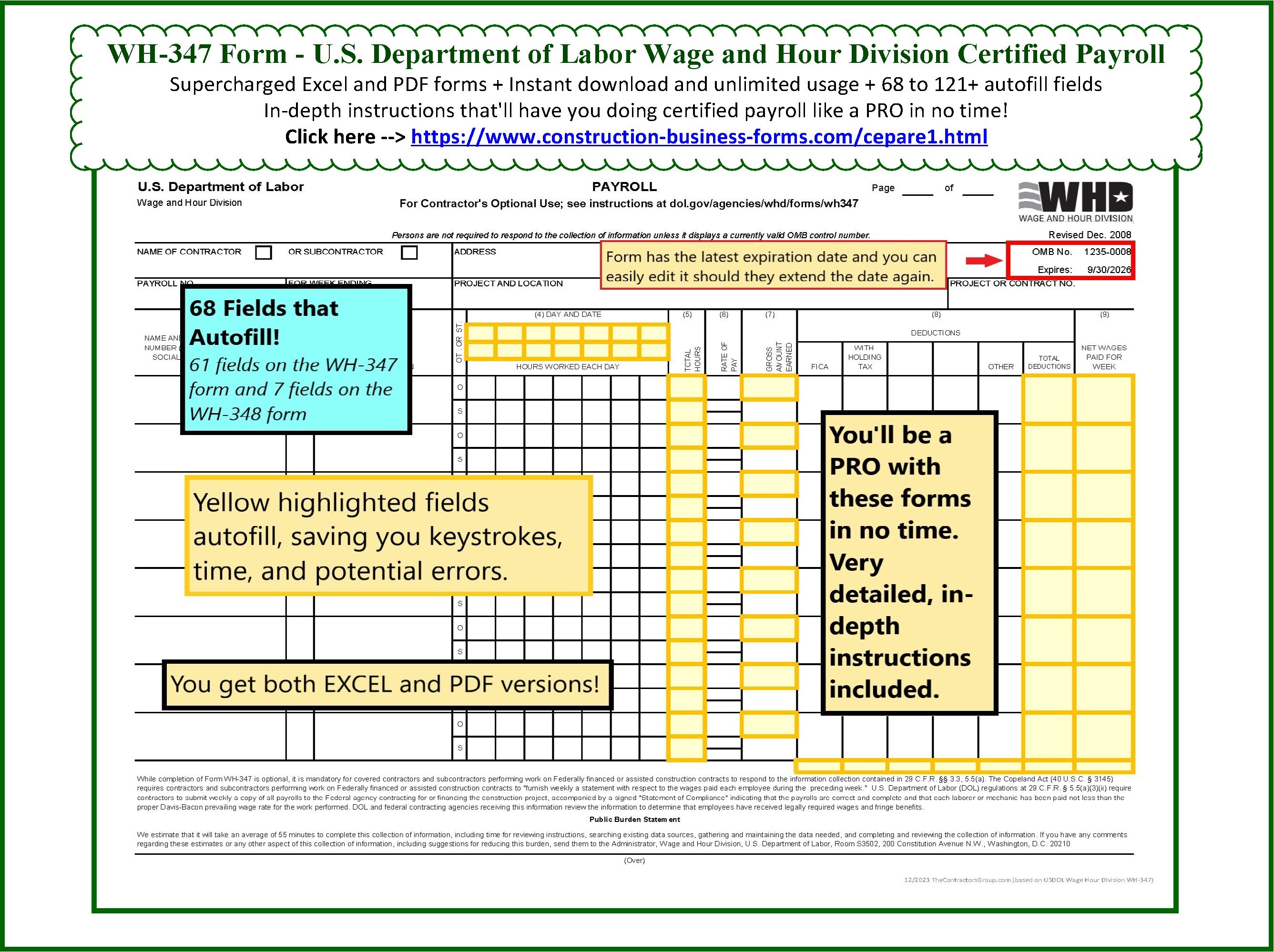He Got Away With Not Paying The Signed Change Orders - Legally!
By Diane Dennis

He Refused To Pay - And Got Away With It!
This article is about a small "mom and pop" T-Bar company and the "big fish" direct contractor and the fact that he refused to pay the change orders.
A signed contractor change order form is a necessity prior to performing any extra work. But even having the signed change order form doesn't guarantee you'll be paid on the changes.
Although this situation took place on a public works project (a community college) it can happen on private works as well.
Likewise although it took place between a general contractor (now known as a Direct Contractor/DC/Direct) and its subcontractor it can just as easily happen between a property owner and a direct contractor.
1998 In California ... A Community College Project
The T-Bar contractor was getting the job done at the "fast-track" pace that his customer the general contractor (now known as a 'direct contractor') wanted, which involved a lot of overtime for the many employees he had hired specifically for the project.
IMPORTANT!
NEVER do extra work (or changes) on a construction project without a signed contractor change order form aka construction change order form.
Whenever he came across something that needed a change order he'd personally get it signed by the superintendent that worked for the general contractor.
The subcontracting company submitted its bills monthly including the change orders, which were paid by the direct contractor - less the change order amounts.
So there were notes made through the project on the waiver/release forms that the change orders still needed to be paid and would be once the college paid the direct.
When the sub was done he had $98,000 in change orders.
|
The main cause of the change orders was that the architects missed a lot of stuff 'out of sight' that affected the project. If the architects hadn't missed these things, the initial bid would have been higher possibly eliminating the need for all, or at least some, of the change orders. |
The sub presented his final billing, including the change orders, to the direct. When the payment came it didn't include the change orders.
The sub contacted the direct and asked when he could expect payment on the change orders.
He Refused To Pay The Change Orders
The direct point-blank refused to pay the change orders.
(!!!)
The sub informed the direct that the change orders were signed and if the direct didn't pay them then the sub would exercise his rights on the project.
The direct again told him that he refused to pay the change orders.
The sub went into a panic. He had to pay the payroll company as well as his supplier but he had no money since the direct was refusing to pay the change orders.
Time To Contact The Owner (the college)
The sub contacted the college, which in turn contacted the architect and then the college informed the sub that they were siding with the direct - they weren't paying the change orders either.
Well of course they're going to go that route because they just got $98,000+ of free work done on their campus!
Back To The Direct Contractor
When the sub asked the direct why he refused to pay the change orders the direct said that although the change orders were signed, they weren’t signed by someone allowed to contract on behalf of the direct.
The sub responded that they were signed by the direct's super on the job. The direct responded that nowhere in the contract did it allow for the super to contract on behalf of the direct, which meant the super’s signatures on the change orders wasn't binding on the direct contractor’s company.
And he was correct; nowhere in the contract did it specifically state that the superintendent had the legal right to contract for the direct.
When the sub threatened to sue, the direct's response was that he had bigger pockets than the sub and that he’d hang on and drag it out until the sub ran out of money, which is exactly what he did.
The Subcontractor Loses - No Payment On The Change Orders
$30,000+ into the attorney the deadline (by California law - check with the law in your state to find out what the deadlines are) to file a lawsuit or drop it came about. The lawsuit would cost another five figures and the sub didn't have it so he had to give up.
Plus even though he refused to pay the change orders to the sub, the sub still had to pay the suppliers, material and labor, because he was contracted with the direct to keep the project clear of liens.
His suppliers were very supportive of the sub and allowed him to make, affordable to him, payments until everything was paid off (maintaining a good reputation with your suppliers and labor providers can be very important to your success).
They almost lost their home and everything they had but they managed to get the debt paid off (although they are still suffering the effects of it even this many years later).
The Hard Lessons Learned
Three main things the “mom and pop” learned through this nightmare:
- Never accept a change order from someone who isn't listed in the contract as being legally allowed to contract for the customer
- Always do a walk-through on the project before submitting the bid
- The CSLB is not there to protect the contractor - they are there strictly to protect the consumer (when contacted they had no interest in helping out with the situation)
As I heard it, the direct did the same thing to several other subs on the project - the elevator guys, the electricians, the plumbers; it was said later that the guy has a reputation of being a "sub-buster".
No kidding!
NEVER accept a signature on a change order form from anyone who is not listed in the contract as being allowed to legally contract for the customer. If your customer has a problem with that they can either sign the change order themselves or issue an addendum to the contract to list those who can sign the change orders. Hold your ground on it.
-----
The reason I know the intimate details of this story is because I was the "mom" half of the "mom and pop" T-Bar company.
Other contractors often told me that I ought to write a book warning of all the nightmares we'd been through.
I decided on a website instead so I started my first website, TheContractorsGroup.com.
I hope that this article has helped you.
If it has can I ask you to please tell me in the comments section below.
It's the only way I know if I'm publishing articles that you all want to read. :)
Thank you!!
Diane
Back to top of this page: He Refused To Pay The Change Orders
Back to the home page: Construction Project Management at InformedContractors














New! Comments
Please leave me your comments below. Facebook doesn't notify me of comments but I'm tickled when I come across them and I always respond when I see them.